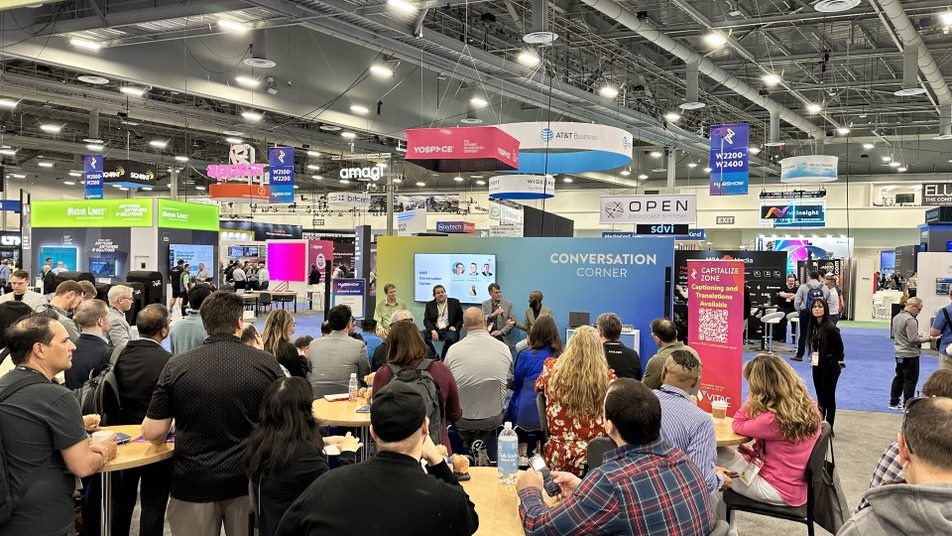Courts recently sided with Hollywood studios over a lawsuit with the Alexander Graham Bell Association for the Deaf and Hard of Hearing concerning the lack of song-lyric captions, leaving caption content at the studios’ discretion. “From the description of both parties, it seems clear to the Court that captions, and specifically the decision regarding what content to caption, is a component of the moviemaking process, as the Studios must decide what level of captioning would provide the best experience for consumers using the caption and subtitle features,” writes the judge.
Here at VITAC, we strive to relay as full a viewing experience as possible through the written word, and follow FCC Caption Quality Best Practices to ensure lyrics are always included in captions. Music is an important part of conveying meaning, and our pre-recorded captioning experts consider more than lyrics when creating captions–they also must describe varying types of instrumental music, including the following:
- Transition: There is music playing, but all it’s really doing if filling dead air. Perhaps a couple on “House Hunters” is driving to their second location or the title card on “Castle” plays a few punchy notes as the show opens. For this, two music notes are placed in the upper right-hand corner of the screen.
- Identification: With this type of music, which is normally instrumental, the hearing viewer would be learning something. If more information about tone or plot is being imparted than can be derived from visuals alone, some sort of signifier is key to that viewing experience. Descriptors are also used to identify specific songs being used as background music. Some examples include:
- [ Suspenseful music playing ]
- [ Upbeat Jazz playing ]
- [ Steel drum playing ]
- [ Mumford & Sons’ “Hopeless Wanderer” playing ]
- Lyrics: Primary focus is being placed on the music. Lyrics are obviously captioned for concerts, but think about your hospital melodrama montages which have given many alternative musicians their break into mainstream. If the creators of a program are allowing enough room in-between dialogue to for a viewer to hear the lyrics, there should be enough room to caption them, as well.
While the format of lyrics and descriptors remains the same across all VITAC programming finding the right way to impart the experience of what’s being heard to a viewer is where captioners need to get a little creative. One pre-recorded captioner writes:
“I once worked on a show for Vice that was nothing but a compilation of their unused B roll for transitions and such. It was kind of artsy and was mostly montages set to different music. That job had everything from [ Soft choral music playing ] to [ Speed metal playing ]. Some of the highlights were [ Pungi playing ], [ Tense, ethereal music playing], [ Slow classical fusion music playing ], and [ Electro-funk playing ].”
There are a couple of puzzles in finding the appropriate words to articulate sound—music and cartoon sound effects being the most notable—but captioning music has plenty of other difficulties, as well. For instance, if you’ve ever tried finding lyrics online, you know that almost every lyrics site is user-generated, which allows for irregularities and inaccuracies. Still, though, they’ll get you in the ballpark.
As for concerts, on the upcoming “Austin City Limits” with Robert Plant & The Sensational Space shifters or the recent episode with James Taylor, there is a whole lot of vamping and improvisation with the classics they’ve performed dozens, if not hundreds, of times. Combine that with Plant’s unique singing voice and a full band, and deciphering lyrics becomes an almost superhuman feat.
We do receive lyrics for some programming, such as “The Voice”, where covers and new arrangements abound. And, as you can imagine, as music takes center stage for these shows, crowdsourced lyrics will not suffice. Another hurdle for the captioners of these shows is timing the work to ensure rhythm and accuracy, especially in duets. As captions require varying amounts of time to load, ensuring that everyone hits their cue.
Despite the fact that we include lyrics in all of our captions, sometimes we’ve noticed that by the time a program gets to air, the lyrics are deleted from the program. This especially occurs on streaming platforms, and we always try to educate the programmer about the importance of providing a full viewing experience to viewers who rely on captions. While this lawsuit may allow the right to refuse captioning music, VITAC will keep working to bring viewers the most accessible programming possible.




